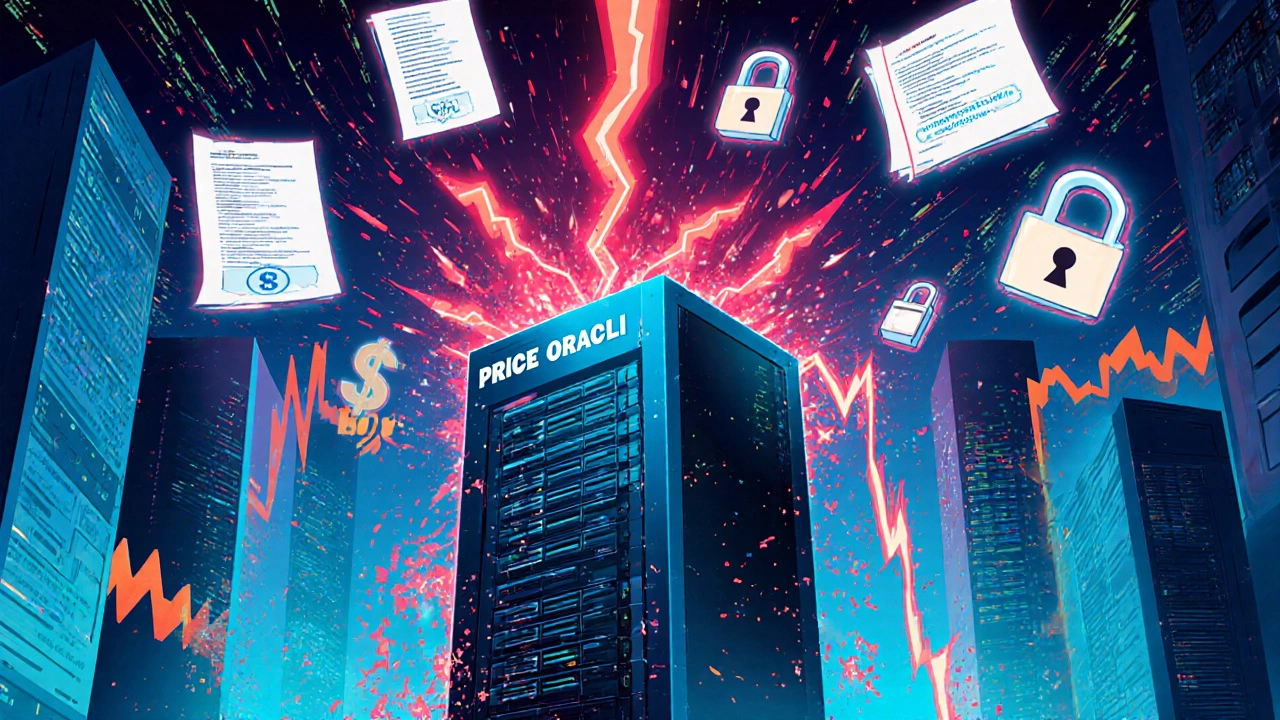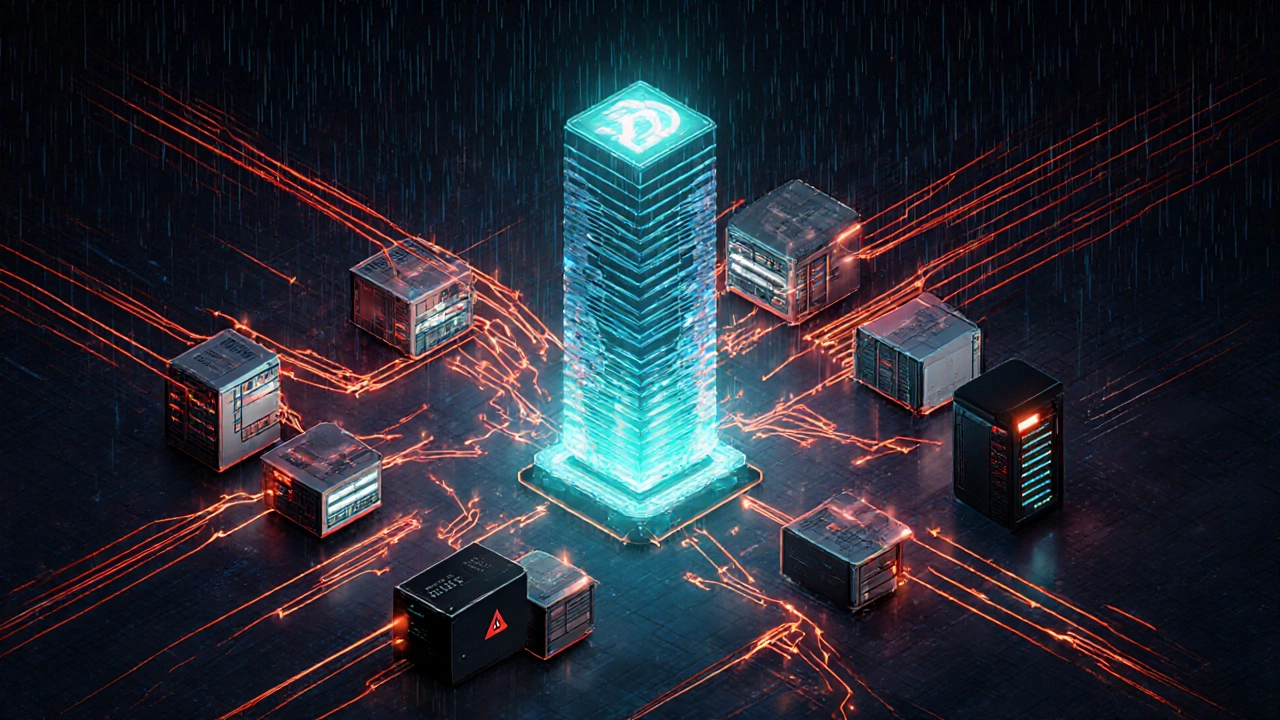Key Takeaways
- DDoS attacks can slow down or temporarily halt transaction processing on many crypto networks.
- Public nodes, mining pools, and exchange APIs are the most common choke points.
- On‑chain throttling, off‑chain scrubbing services, and CDN caching each have trade‑offs.
- Hybrid defenses that combine multiple layers give the best protection without crippling performance.
- Regular monitoring and automated response scripts can reduce downtime from minutes to seconds.
When a Distributed Denial of Service (DDoS) attack targets a cryptocurrency network, the result can be more than just a noisy headline. Unlike a single website that can go dark for a few minutes, a crypto network powers wallets, exchanges, and DeFi contracts that people rely on 24/7. If the network stalls, funds can get stuck, markets can wobble, and confidence can dip. Below we break down exactly how a DDoS hurts the ecosystem, why certain components are more vulnerable, and what practical steps operators can take right now.
What a DDoS Looks Like on a Blockchain
In traditional IT, a DDoS floods a server with bogus traffic until legitimate users can’t get through. On a blockchain, the attack can focus on several layers:
- Network propagation: Flooding peer‑to‑peer (P2P) nodes with unnecessary messages slows block gossip, causing forks or orphaned blocks.
- API endpoints: Exchanges and wallet services expose HTTP or WebSocket APIs for price quotes and transaction submission. Overwhelming these endpoints can halt order books and stop deposits.
- Mining or validation pools: Saturating the pool’s RPC interface can delay block creation, which directly impacts confirmation times.
Because most public blockchains rely on voluntary nodes, they lack the dedicated bandwidth that cloud providers enjoy. That makes them an attractive target for attackers seeking cheap ways to disrupt a high‑value market.
Who Gets Hit First? The Most Vulnerable Entities
Not every part of the ecosystem suffers equally. Here are the five typical choke points, each marked up the first time they appear:
- Public node: Any server that syncs the full chain and serves RPC calls. When flooded, it can’t relay new blocks or transactions.
- Mining pool or validator set: A concentration of hash power or staking power. If their submission endpoint stalls, block intervals lengthen.
- Wallet service: Apps that aggregate many users’ keys. API downtime means users can’t send or receive funds.
- Exchange: Centralized platforms that provide liquidity. Order matching stops, leading to price volatility.
- Layer‑2 scaling solution: Rollups or state channels that rely on a set of sequencers. If the sequencer’s gateway is hit, off‑chain transactions pile up.
Because each of these entities often runs on a single cloud region for cost reasons, a well‑orchestrated DDoS can take down a whole segment of the network with just a few gigabits of traffic.

Real‑World Examples
In 2023, a popular DeFi platform’s price‑oracle API suffered a 4Gbps SYN‑flood that lasted 12minutes. During that window, smart contracts that depended on fresh price data reverted, locking $45million in user funds. A few months later, a major exchange’s order‑book API was hit by a UDP‑reflection attack that caused a 30‑second halt in trading. The price of the underlying token dropped 8% on the minute‑by‑minute chart, underscoring how even short outages can have outsized market impact.
These cases share a pattern: the attacker didn’t need to break cryptography; they simply drowned the communication channels that keep the system moving.
How to Measure the Damage
Before you can protect, you need to know what you’re losing. Typical metrics include:
- Transaction latency: Time from broadcast to inclusion in a block. A spike from 15seconds to >2minutes signals a network‑level DDoS.
- Block time variance: Deviation from the expected block interval (e.g., 10seconds on Solana, 12seconds on Ethereum). Larger variance means miners/validators can’t keep up.
- API error rate: Percentage of 5xx responses from node, wallet, or exchange endpoints.
- Economic loss estimate: Calculated by multiplying average transaction value by the minutes of downtime and adding market impact.
Most analytics platforms (e.g., Grafana, Prometheus) can alert you when any of these thresholds breach, allowing you to trigger mitigation scripts automatically.
Mitigation Strategies - A Comparison
| Method | Latency Impact | Cost (USD/month) | Effectiveness |
|---|---|---|---|
| On‑chain gas throttling | Low (adds ~1‑2s per tx) | Minimal (protocol change only) | Medium - works for flood of cheap transactions |
| Off‑chain scrubbing service (e.g., Cloudflare Spectrum) | Moderate (adds ~10‑30ms) | ~$2,000‑$8,000 | High - absorbs large volumetric attacks |
| Content Delivery Network (CDN) caching of API responses | Very low (cached hits <1ms) | ~$500‑$1,500 | Low‑Medium - only protects read‑heavy endpoints |
| Hybrid (on‑chain limits + off‑chain scrubbing) | Low‑Moderate | ~$2,500‑$9,500 | Very High - covers both volume and state‑exhaustion attacks |
Choosing the right mix depends on your operational budget and the criticality of the service. For a small validator node, on‑chain throttling plus a cheap CDN might be enough. Large exchanges typically opt for the hybrid model to stay open round‑the‑clock.

Practical Steps You Can Take Today
- Audit your exposure. List every public node, API gateway, and third‑party service you depend on.
- Enable rate limiting. Most cloud firewalls let you cap requests per IP per second. Set aggressive limits for unauthenticated endpoints.
- Deploy a scrubbing provider. Sign up for a DDoS‑mitigation service that can automatically route traffic through a clean‑pipe when an attack is detected.
- Cache read‑only data. Use a Content Delivery Network for price feeds, block headers, and static JSON files.
- Monitor latency in real time. Set alerts for block‑time variance >20% of the norm.
- Run a failover node. Keep a secondary node in a different geographic region ready to take over if the primary goes silent.
- Test your response. Conduct a simulated traffic spike (using tools like hping3) to verify that your mitigation stack reacts within seconds.
By treating DDoS defense as a layered process, you reduce the chance that a single bottleneck brings the whole network down.
Future Outlook - Will DDoS Remain a Threat?
As blockchain adoption grows, so does the incentive for attackers. Newer protocols are experimenting with built‑in anti‑spam mechanisms (e.g., Ethereum’s EIP‑1559 fee market, Solana’s transaction prioritization). At the same time, DDoS‑as‑a‑service markets are becoming cheaper, meaning even hobbyist groups can launch sizable floods.
That said, the industry is also converging on best practices: shared mitigation services, standardized API rate limits, and cross‑chain monitoring dashboards. If you stay proactive and keep your stack flexible, a DDoS will feel more like a brief hiccup than a catastrophic shutdown.
Frequently Asked Questions
Can a DDoS completely shut down a blockchain?
A true, decentralized blockchain can keep running as long as a majority of nodes stay online. However, user‑facing services-wallets, exchanges, block explorers-can be effectively taken offline, which feels like a shutdown for most users.
What’s the difference between on‑chain and off‑chain DDoS mitigation?
On‑chain methods adjust the protocol itself (e.g., higher gas fees for spammy txs). Off‑chain solutions sit in front of your servers, filtering traffic before it reaches the node or API.
How much does a DDoS mitigation service usually cost for a crypto exchange?
Costs vary widely, but most mid‑size exchanges pay between $3,000 and $10,000 per month for scrubbing, bandwidth, and 24/7 support.
Are there any open‑source tools to test DDoS resilience?
Tools like hping3 and slowloris can simulate high‑volume traffic. Pair them with a monitoring stack (Prometheus + Grafana) to see how your nodes react.
Does using a CDN affect blockchain data integrity?
CDNs only cache public, read‑only data like price feeds or block headers. They never alter the underlying consensus data, so integrity remains intact.

